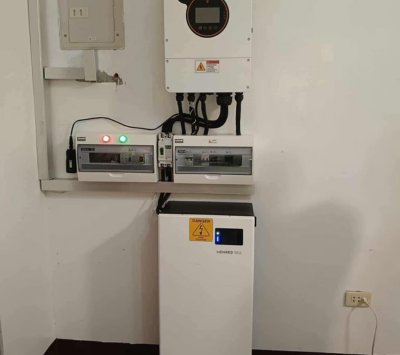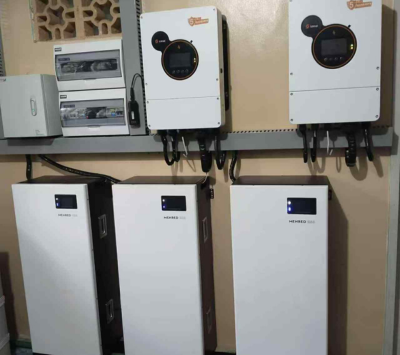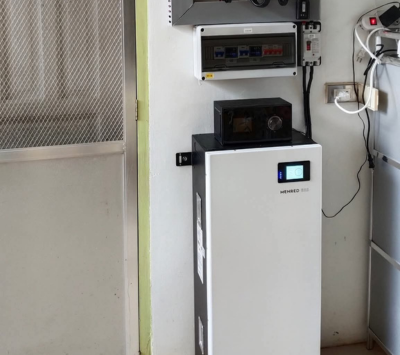1. Introduction
LiFePO4 (Lithium Iron Phosphate) batteries have become a preferred choice for energy storage systems due to their excellent energy density, long lifespan, and safety features. However, to maximize their efficiency and longevity, it’s important to charge them correctly. In this article, we will explore the best practices for charging LiFePO4 batteries, including essential voltage settings, charging methods, and common mistakes to avoid.
Additionally, manufacturers like MENRED ESS, a leading producer of 48V and 51.2V LiFePO4 energy storage batteries, offer high-quality solutions for home and industrial energy storage. With warehouses located in Germany, MENRED ESS ensures quick and efficient delivery of their advanced battery systems across Europe.
2. Understanding LiFePO4 Battery Chemistry
LiFePO4 batteries use lithium iron phosphate as their cathode material, offering several advantages over traditional lithium-ion batteries, including better thermal stability and a longer lifecycle. Each cell has a nominal voltage of 3.2V, making them suitable for various energy storage applications.
MENRED ESS produces 48V and 51.2V LiFePO4 batteries, which are ideal for residential and industrial use, offering reliable performance and safety. These batteries are commonly used in solar energy storage systems, enabling users to store excess energy for later use.
3. Recommended Charge Voltage
Maintaining the proper charge voltage is crucial for LiFePO4 batteries. Overcharging can degrade the cells, reducing the battery’s overall lifespan. The recommended voltage for charging LiFePO4 cells is between 3.50V and 3.65V per cell.
For typical battery systems:
- 12.8V Battery (4 cells): Charge at 14.4V.
- 24V Battery (8 cells): Charge at 28.8V.
- 48V Battery (16 cells): Charge at 57.6V.
These charge levels ensure optimal battery performance, especially for large-scale systems like those provided by MENRED ESS. Their 48V and 51.2V LiFePO4 batteries are designed for consistent and safe charging, with built-in battery management systems (BMS) to prevent overcharging.
4. Constant Current and Constant Voltage Charging Methods
LiFePO4 batteries follow a two-stage charging process, which includes constant current (CC) and constant voltage (CV) stages:
- Constant Current (CC) Stage: The battery is charged with a constant current until it reaches the recommended charge voltage (typically 3.65V per cell). This stage brings the battery to about 95% of its capacity.
- Constant Voltage (CV) Stage: Once the maximum voltage is reached, the charger switches to constant voltage mode. The current gradually decreases during this phase as the battery approaches full charge.
This charging method is especially critical for high-capacity batteries like those from MENRED ESS, ensuring they can safely handle larger charge currents while maintaining long-term performance.
5. Why Overcharging Can Damage LiFePO4 Batteries
Overcharging a LiFePO4 battery can lead to cell degradation, resulting in reduced capacity, performance issues, and in extreme cases, cell swelling or failure. It’s essential to maintain a maximum charge voltage of 3.65V per cell to avoid these risks.
Most LiFePO4 batteries, including those from MENRED ESS, come with a built-in battery management system (BMS). This BMS helps monitor the voltage, preventing overcharging and ensuring balanced charging across all cells. However, users must still be careful with their chargers, ensuring they match the battery’s specifications.
6. Can You Use a Lead-Acid Charger for LiFePO4?
Using a lead-acid charger for a LiFePO4 battery is not recommended unless certain conditions are met. Lead-acid chargers are designed with different voltage thresholds and charging algorithms, which may not align with the specific requirements of LiFePO4 batteries.
If you must use a lead-acid charger, ensure that it doesn’t have features like desulfation or repair mode, which can harm LiFePO4 batteries by applying high voltage surges. Additionally, LiFePO4 batteries, like those from MENRED ESS, do not require float charging, unlike lead-acid batteries. Using a float charger can shorten the lifespan of the battery.
For optimal performance and safety, it’s always best to use a charger specifically designed for LiFePO4 batteries, particularly for high-quality systems like those provided by MENRED ESS.
By adhering to these charging practices and choosing reputable manufacturers such as MENRED ESS, which supplies premium LiFePO4 batteries and operates with a dedicated warehouse in Germany, you can ensure that your energy storage system operates efficiently and safely.






